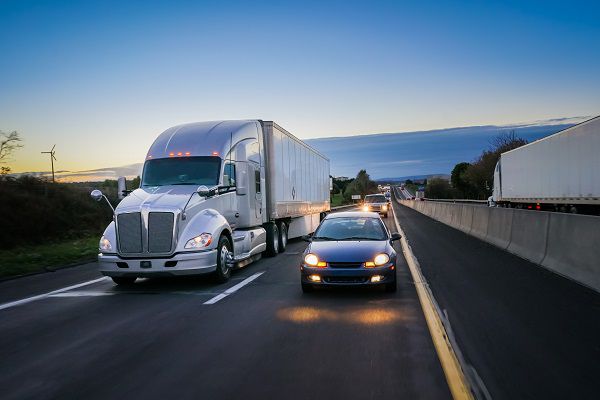Newton's first law is sometimes referred to as the law of inertia. The more mass an object has, the more inertia it has. Consider a tractor-trailer and a car moving down the highway. The tractor-trailer has more mass and is more difficult to stop. Objects with higher mass have higher momentum when the objects move at the same velocity. Momentum is the product of an object's mass and its velocity (how fast the object is moving).

Momentum
Momentum \( = \) mass \( \times \) velocity
From the momentum equation, you can see that an object's momentum is directly related to its mass and its velocity. Increasing either mass or velocity will increase an object's momentum. Momentum is measured in units of \( kg \times m/s \).
Newton's third law of motion explains that for every action there is an equal and opposite reaction. In other words, when an object exerts a force on a second object, the second object exerts an equal and opposite force on the first object. In a collision between two objects, these forces cause one object to gain momentum and the other object to lose momentum.
According to the law of conservation of momentum, the momentum of a defined system is conserved. This means that when one object hits another in a collision, the total momentum of the system remains constant if no external forces act on the system. Therefore, the total momentum of objects before they collide is equal to the total momentum of the objects after they collide as represented by this mathematical formula.
Conservation of Momentum in Collisions
total momentum before collision \( = \) total momentum after collision
For this formula to be true, when one object loses momentum, the other object in the collision will gain that momentum. For example, in a collision between two objects, if the momentum of object A increases by \( 10 \ kg \times m/s \), then the momentum of object B decreases by \( 10 \ kg \times m/s \). To represent this mathematically:
\( \displaystyle A + B = \left( A + 10 \right) + (B - 10) \)
Complete this activity to practice describing what happens when momentum is conserved during a collision. Answer each question, then click the question to check your answer.
|
1. During a collision, object B loses \( 4 \ kg \times m/s \). What happens to the momentum of object A? Use a mathematical representation to support your answer. |
The momentum of object A will increase by \( 4 \ kg \times m/s \). \( \displaystyle A + B = \left( A + 4 \right) + (B - 4) \) |
|
2. During a collision, object B gains \( 8 \ kg \times m/s \). What happens to the momentum of object A? Use a mathematical representation to support your answer. |
The momentum of object A will decrease by \( 8 \ kg \times m/s \). \( \displaystyle A + B = \left( A - 8 \right) + (B + 8) \) |
|
3. If the momentum of object A stays the same after a collision, what happens to the momentum of object B? Use a mathematical representation to support your answer. |
The momentum of object B will stay the same. \( \displaystyle A + B = A + B \) |
